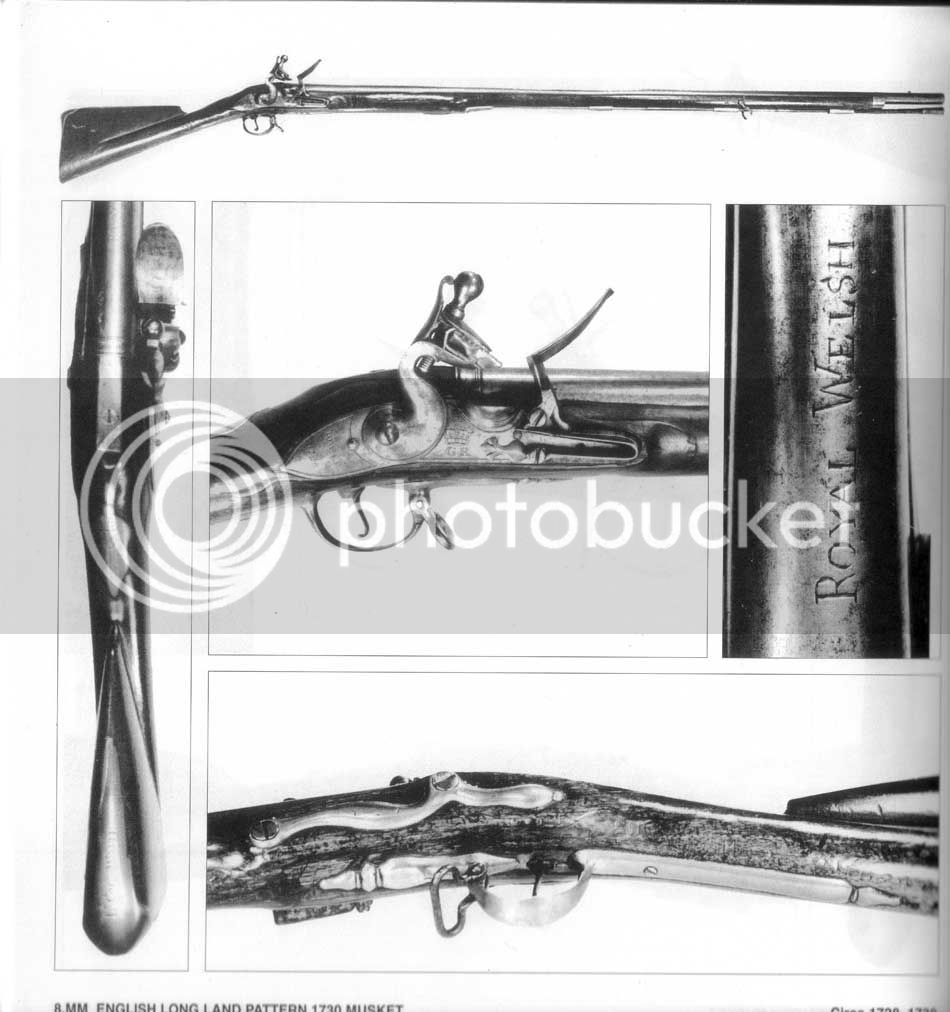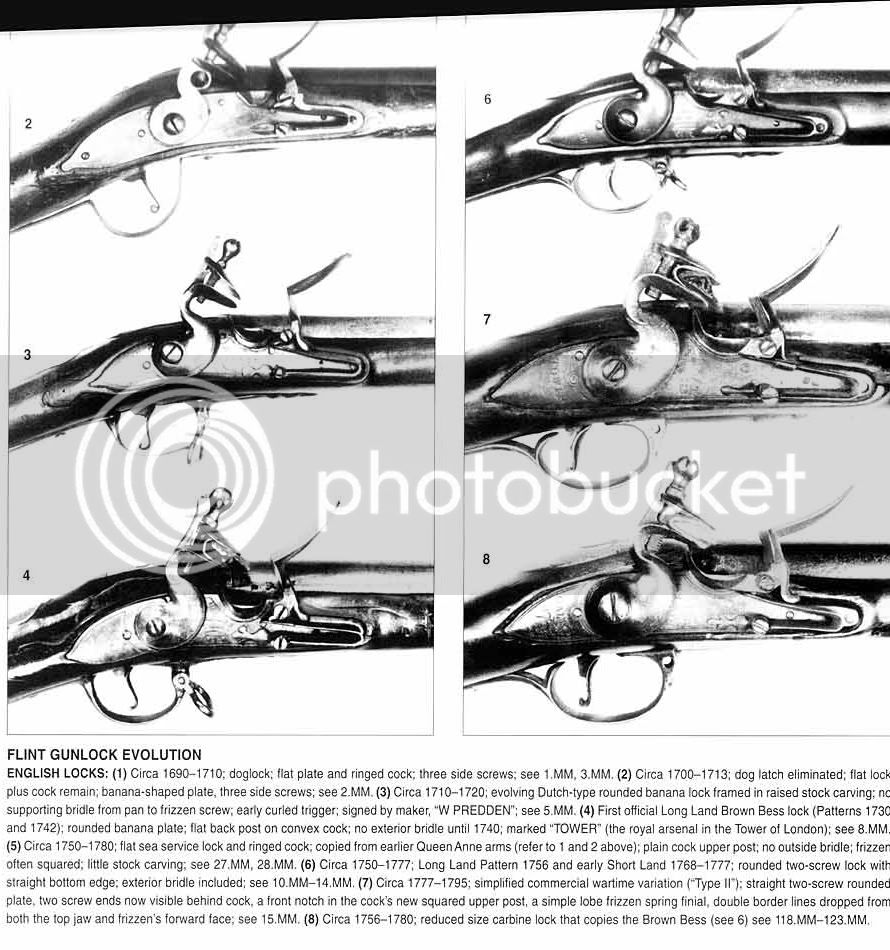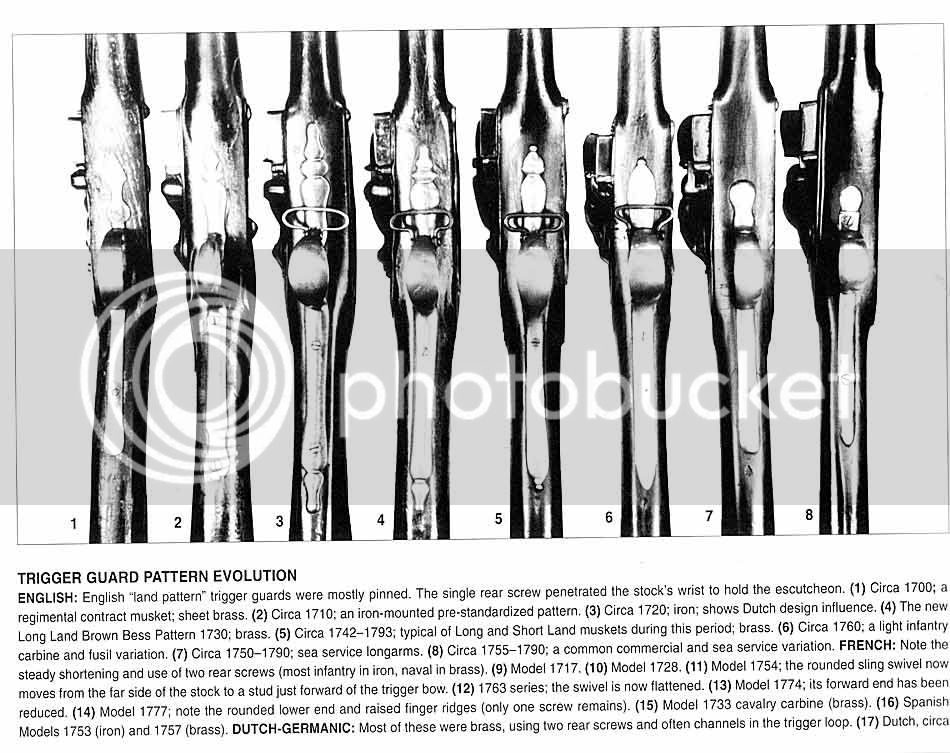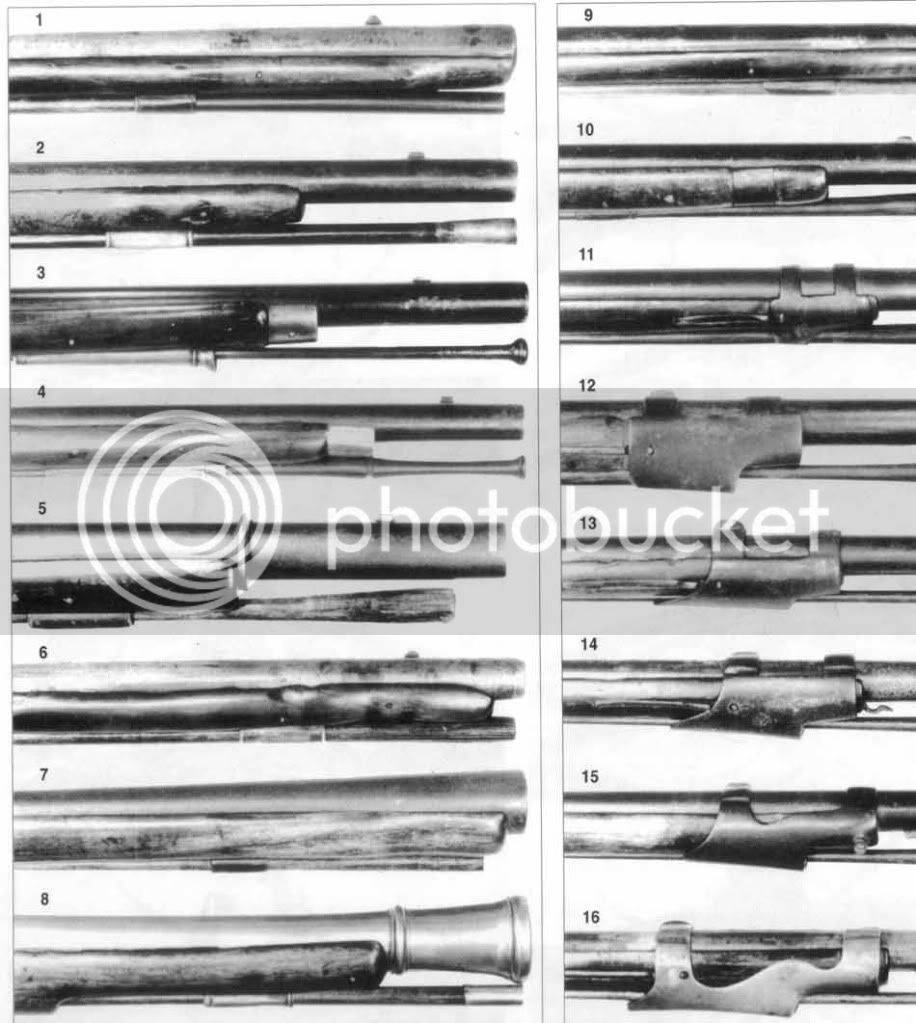Authentic Bess reproductions are out there. They're just not cheap.











My Mom told me to never step in dog manure and then tell everybody it's chocolate pudding..... :haha:For those who did not have anything nice to say
Remember what you mother taught you
Deutsch








This first of the Brown Bess Muskets included the 46", .75 cal. Barrel with a top bayonet stud, as well as a walnut stock that established the form for the entire series - a round wrist, handrail butt, raised carving around the lock and sideplate, plus a bulging hand hold just below the tailpipe. A rounded two-screw banana lock lacked an external bridle and had a wide flat upper post. Its furniture, now in brass, introduced a 6" long stepped butt tang, convex side plate with a tail, a shield escutcheon, plus a Dutch-style, lobed trigger guard. The wooden ramrod mounted a 11/2" brass tip and was held by four barrel-shaped pipes. Originally issued without a nose cap, some regiments added a brass strip around the end, as in this example. The large sling swivels had inside measurements of 2" wide for the upper one and 13/4" for the lower.
Length: 62 1/2"
Barrel: 46", .76 cal.
Lock: 6 3/4" x 1 3/8"
Trigger Guard: 11 1/4"
Butt Tang: 6"
Side Plate: 6 1/4"
Furniture: Brass
Weight: 9.0 lbs
Enter your email address to join: